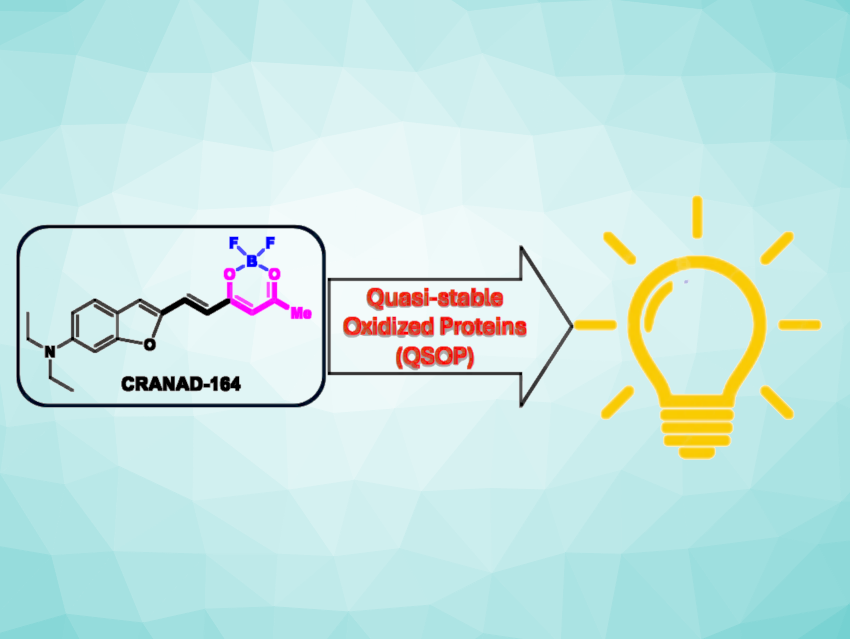Reactive oxygen species (ROS) and reactive nitrogen species (RNS) can be produced in living organisms, where they can have a range of biological effects. There are different methods for detecting ROS and RNS both in vitro and in vivo, but approaches to the detection of secondary products such as quasi-stable oxidized proteins (QSOP), are less well-explored.
QSOP are products such as protein peroxides, protein hydroperoxides, or protein chloramines, which can be harmful to biological functions. They can persist for certain periods of time but are not thermo-stable and can further decompose into stable oxides or fragments.
Chongzhao Ran, Massachusetts General Hospital and Harvard Medical School, Boston, MA, USA, and colleagues have synthesized acetylacetone-based half-curcumin chemiluminescence probes (example pictured above) that can be used to detect quasi-stable oxidized proteins in vivo and in serum samples. The team used a furan ring and BF2 unit to constrain the optimized molecule’s (called CRANAD-164) configuration and increase its chemiluminescence intensity in the presence of HClO.
The researchers then confirmed that CRANAD-164 can respond to QSOP, using albumin as a model protein. They used the probe for in vivo imaging In a mouse model for inflammation induced by lipopolysaccharide (LPS) and found that it showed signal changes in the livers of the animals, as well as in serum. Further in vitro experiments demonstrated the probe’s ability to detect QSOP in serum samples, making it useful to indicate diseases and monitor the increase of QSOP during aging.
- Half‐curcumin‐based chemiluminescence probes and their applications in detecting quasi‐stable oxidized protein,
Chongzhao Ran, Jun Yang, Biyue Zhu, Jing Zhang, Steven H. Liang, Shiqian Shen,
Angew. Chem. Int. Ed. 2024.
https://doi.org/10.1002/anie.202409896



